The Physics and Technology of Tennis
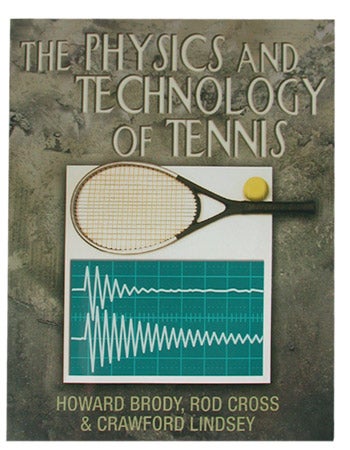
Overview
Looking for the bible of the physics of tennis? Look no further than THE PHYSICS AND TECHNOLOGY OF TENNIS. Professor Rod Cross and the late Howard Brody, two acclaimed physicists, join forces with the Tennis Warehouse University Professor, Crawford Lindsey, in a mind-expanding adventure, exploring the wonders of the tennis universe as they are revealed in the flights of the balls and their collisions with racquets and courts.
The book's 42 chapters, 450 pages, and 310 illustrations bulge with everything players, coaches, stringers, retailers, and teaching pros ever wanted to know about tennis equipment and how it affects performance. Best of all, it answers the questions you didn't even know needed asking!
Please note, this is not an instructional aide to improve tennis technique.

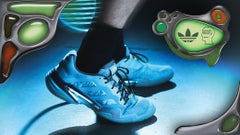
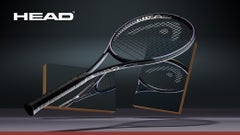

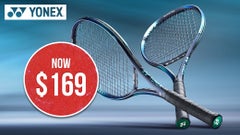
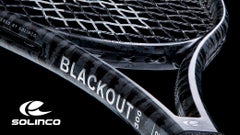


Previous Feedback
Comments: First of all, this book will more than likely be bigger than you think by looking at the cover page on this website. It is an amazing book, and I haven't even read that far into it. It is not difficult to read, but it does take a while because there is so much information to soak in that it makes you take it slow (of course I am the person that wants to know it all). If you buy or read this book, it is important that you read the preface because it explains that each chapter is written to be able to stand on their own. If you want to know the reality behind racquets and the other physical aspects of tennis, this book is definitely the one to buy.
From: Anon, 01/11
Comments: This book will describe everything about the theory of tennis ball bouncing and spin. It also is exceptional in analyzing string, tension and frames. I hoped to learn about stroke mechanics. This is not the book for learning about stroke mechanics or strategy. Anyone who hopes to learn how to play tennis or how to swing a racquet will be disappointed. However, if you want to understand the flight of the ball and the physics of ball flight and bounce, this is the only book that does so in exquisite detail.
From: Diana, Woodside, NY, USA. 3/04
"The Physics and Technology of Tennis is the most important tennis book in fifteen years and is constantly on and off the front shelf of my library. The authors solve a host of scientific issues related to tennis and expose a multitude of myths, helping coaches and players streamline their learning systems, improve their performance and further their understanding and enjoyment of the game. Anyone who wants to take a leadership role in tennis on and off the court will find this book a must, and any teaching pro who does not own this book is really missing the boat. Having a great deal of respect for the authors, I've waited a long time for this book to be published, and now it's here. If you want to get smarter, faster, I would suggest you buy this book immediately."
-Vic Braden (teacher, author, broadcaster, researcher)
"The great physicist, Eugene Wigner, once told me that the most important scientific paper was not the first to address the subject, but the last - i.e., the complete definitive paper. The Physics and Technology of Tennis, by Brody, Cross, and Lindsey, should be the last to address the technical side of tennis. The book analyzes every facet of the technical side of the game completely and accurately. Unless, and until, the game undergoes another revolution such as that accompanying the changes in racket design over the past three decades, there is simply little more to be said."
-Robert K. Adair, Sterling Professor Emeritus, Yale University (author of the Physics of Baseball)
"The Physics and Technology of Tennis is one of those books that we've all been waiting for. Anyone who is working in tennis or racquet sports should own it. I am sure that it will be one of the first sources referenced in papers and books on the subject for years to come. I just have one problem now - how to rewrite my university sports engineering course so that I can use it as a text book. As a first year text - and possibly even later - it will be invaluable."
-Dr. Steve Haake, University of Sheffield, ITF (International Tennis Federation) Chief Technical Consultant
"This is a fascinating book that works at many different levels. This book is for you -if you are a player or teaching professional keen on selecting the best racquet and string for any style of play;
-if you are a stringer anxious to propel the art and science of your craft to a new level;
-if you are intrigued by the new technologies and ideas at the developmental frontiers of the sport;
-if you are searching for fascinating real-world materials to enliven your high school or university science teaching;
-if you are an engineer or scientist scouring the landscape for a new departure for products or research;
-if you are simply a student of the game ravenous for information you likely won't find anywhere else.
Who knows, after reading this book, you may find yourself speaking at the next ITF International Congress on Tennis Technology at Wimbledon."
-Professor Robert M May (Lord May of Oxford) President, The Royal Society (The world's oldest scientific academy in continuous existence (1660) whose Fellows have included Isaac Newton, Charles Darwin, Ernest Rutherford, Albert Einstein, Dorothy Hodgkin, Francis Crick, James Watson and Stephan Hawking, and presently includes 65 Noble Laureates.)
This delightful book brings modern science to bear on the game of tennis. It comes along at a time of rapid technological advancement in the equipment used to play the game. One of the stated goals of the book is to distinguish the science of these advancements from the folklore and myth. Their goal has been achieved with resounding success. As a practicing physicist with a keen interest in the physics of sports, I marvel at the ease with which the authors make the physics of tennis understandable to a wide range of potential readers - from those whose primary interest is tennis to those whose primary interest is physics, as well as the broad spectrum of people in between. They do an excellent job addressing many of the important issues about the game, such as the role of the string tension, the meaning of "power," the importance of swingweight, and the relevance of the various sweet spots. Many of the concepts discussed are directly applicable to other sports, such as baseball, in which a club impacts a ball. For this reason the book is destined to be an important resource for anyone wishing to learn - or even teach - the physics of sports.
But the authors do more than just teach us about how to apply the principles of physics to their game. They also provide great insight into the way a physicist dissects, analyzes, interprets, and tries to explain the phenomena of the everyday world. This partly involves application of tried-and-true fundamental principles, such as the conservation of momentum and angular momentum during the collision between the ball and racquet. But partly it involves issues that go well beyond the things we learn in textbooks - things that are too complex to be addressed from first principles but instead require some combination of intelligent approximation and careful experimentation, both important hallmarks of modern science. The authors give the nonscientific reader a real flavor for how science works and they do so without sacrificing intellectual honesty - we are told what things we know very well, what things we can only estimate, and what things we don't know at all. This book will surely occupy a very special place on my desk.
-Alan M. Nathan, Professor of Physics, University of Illinois at Urbana-Champaign (Internationally renowned expert on the physics of baseball, especially on the baseball-bat collision
"Three of the world's leading experts in the physics of tennis have teamed up to produce the definitive guide to tennis equipment.
'The Physics and Technology of Tennis' provides a wealth of information on tennis racquets, balls and courts, and how these affect performance. It should prove to be an invaluable reference for players, coaches, stringers, retailers and physicians with an interest in tennis medicine. Designed to help players make critical choices from the wealth of advanced equipment now available in the markets, the book answers key questions about racquet weight, size and vibration, string materials, properties and tension, and the physics of how tennis balls bounce, bite and spin."
Sports Medicine & Science in Tennis